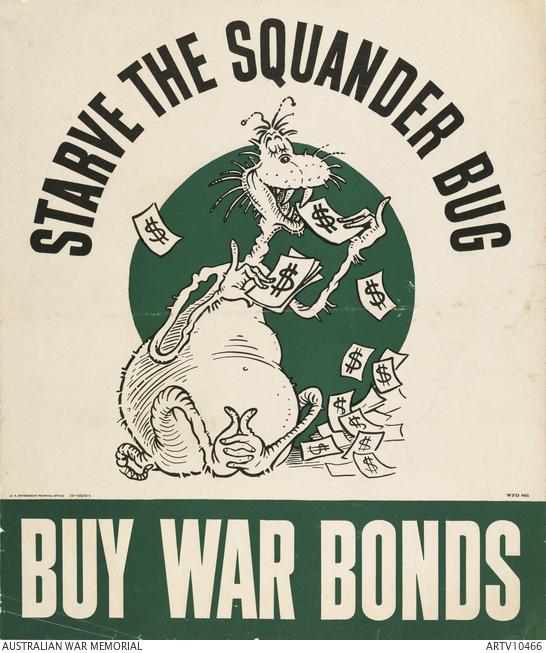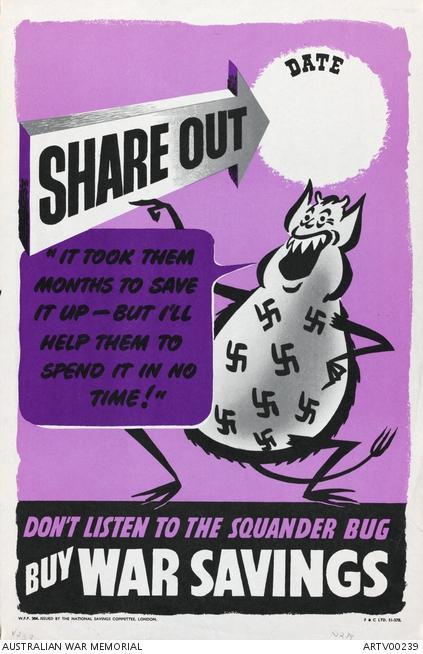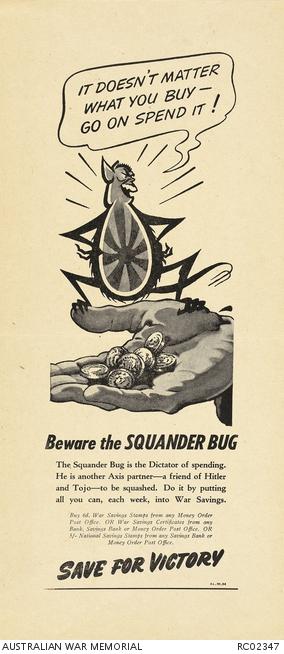How Dr Seuss and the Squander Bug went to war

Long before becoming famous as the author of The Cat in the Hat and The Lorax, Dr Seuss used his talents to produce political cartoons and propaganda during the Second World War.
Theodor Seuss Geisel wrote and illustrated more than 60 children’s books under the pen name Dr Seuss, but the American also used his artistic abilities to fight fascism and aid the Allied war effort.
Geisel, the grandson of German immigrants, had been working in advertising and had already published his first children’s book, And to think that I saw it on Mulberry Street, when war broke out. An outspoken critic of isolationism who drew hundreds of political cartoons denouncing Hitler and Mussolini for the New York daily newspaper PM, Geisel joined the US Army and was deployed to Fox studios in Hollywood to work with some of the country’s top filmmakers and animators as part of Oscar-winning director Frank Capra’s signal corps unit.
His propaganda poster urging Americans to “Starve the Squander Bug” and “Buy war bonds” is now on display in Anzac Hall as part of the Hearts and minds: propaganda wartime exhibition at the Australian War Memorial in Canberra.
Curator Alex Torrens said the Squander Bug was a propaganda character originally created by the British National Savings Committee to discourage wasteful spending.
“The Squander Bug was a very popular campaign,” Torrens said. “He was invented by British freelance illustrator Philip Boydell, who was at home sick, suffering terribly from the flu, when he came up with the idea to create this little germy bug-like creature. He gave him a little forked tail like the devil and covered him in swastikas.”

Boydell produced a series of six sketches of the imp-like creature for press adverts and called it the “Money Grub” that could “push, pull, scratch, bite and steal”.
The character’s name was changed to the Squander Bug and it was later used in a range of poster campaigns and political cartoons to warn people about the dangers of squandering money and to encourage them to save and invest in the war effort.
Torrens said the character was intended as a positive, light-hearted alternative to endless government warnings on what not to do.
“During the Second World War, commercial advertising tied in with propaganda and they took successful techniques from that, and one of those techniques was character branding,” she said.
“It was meant to be a more generous, more humorous approach to the very real fear that the government had of wasteful spending.
“Governments were particularly fearful that women going into the workforce who weren’t used to managing money might waste it on luxury goods or items.
“The idea was that the Squander Bug was also the enemy, reinforcing that idea that the enemy could be within or without. People were encouraged to be patriotic in everything that they did and that went right down to purchasing goods … There was this idea of total war, and that everything you did, and every aspect of life, was geared towards the war effort.”
British wartime cartoonists David Low and Carl Giles also used the character, while Dr Seuss’s version was part of a campaign to promote US war bonds in 1943 and 1944.
“[The Squander Bug] also came out in film in a cartoon that was animated,” Torrens said. “And we even converted him in Australia into an Asiatic bug with the Rising Sun and big buck teeth and other racial stereotypes.
"[But] not everyone was happy about the bug – many saw the use as hypocritical by the Government – especially if they were spending public funds on things they didn’t agree with and asking citizens to be austere."
On 7 July 1944, the Hobart Mercury reported that the Women’s Non-Party League protested against "the stupid 'squander bug' advertising" by the Government over radio programmes. "They thought that it was a waste of public money and a reflection on the intelligence of the public."

An Australian leaflet describing the Squander Bug as “the Dictator of Savings” and a “friend of Hitler” that needed to be squashed is on display alongside Dr Seuss’s work and a British poster. The purple and grey poster declares: “Don’t listen to the Squander Bug. Buy War Savings.”
Torrens said the Memorial’s collection of wartime propaganda posters was one of the hidden treasures in the national collection.
“Hearts and minds aims to showcase the collection and to delve into it more broadly,” she said.
“It’s an opportunity for people to reflect and think about the power of visual communication and how these images resonate differently across decades and across time.”
The Memorial’s collection of propaganda material includes more than 10,000 wartime posters, from government-issued campaigns to handmade posters protesting the war in Vietnam.
The exhibition focuses on home-front propaganda from the First and Second World Wars and features posters from France, Austria, Hungry, Germany, Italy, Russia, and the United States, as well as Australia.
Featuring some of the world’s most iconic propaganda posters – including Uncle Sam, Lord Kitchener and one of the original British “Keep and Calm Carry On” posters – the exhibition also includes works by Australian artist Norman Lindsay and British cartoonist Cyril “Fougasse” Bird, film and animation, a pin cushion featuring a caricature of Adolf Hitler, and a Walt Disney jigsaw puzzle.
“Propaganda posters were not propaganda in isolation,” Torrens said. “During the Second World War, Allied and Axis nations sought to get the populace behind the war effort, encouraging the public to join up, produce, eat less, stay healthy, watch their neighbours, and hate the enemy.”
“In this exhibition I wanted to focus on the strengths of the propaganda collection, which was the First and Second World War holdings, and enhance that with engaging objects from the collection and the personal stories behind them.
“Only about 20 per cent of the collection is accessible on the website, so I really relished this opportunity to open up cabinets and bring them out.”